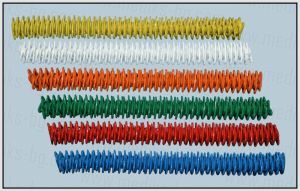Botanical Name: Melaleuca alternifolia.
Plant Part: Leaves.
Extraction Method: Steam.
Origin: Australia.
Description: The Tea Tree is a small tree or shrub with needle-like leaves. It is also domestically referred to as Ti-tree. It can grow up to 7 meters (20 feet) in height and thrives in marshy areas, though it is now cultivated in plantations. The Tea Tree is very robust; it is ready for cutting only two years after its? previous harvest.
Colour: Pale yellow to colorless.
Consistency: Thin.
Note: Middle.
Strength of Aroma: Medium to Strong.
Blends well with: Tea Tree essential oil blends particularly well with Cinnamon, Clary sage, Clove, Geranium, Lavender, Lemon, Myrrh, Nutmeg, Rosewood, Rosemary and Thyme.
Aromatic Scent: Tee Tree essential oil has a fresh, Antiseptic and medicinal scent. It also has characteristic mint and spice back-notes.
History: The aboriginal people of Australia have long used Tea tree oil; similarly, Tea tree has a long history of use within the field of aromatherapy. In World War Two, the producers and the cutters of Tea Tree were exempt from military service until enough essential oil had been accumulated. The oil was a highly valued product as it was issued to each soldier and sailor as part of their kit in order to treat tropical infections and infected wounds.
How to Use Tea Tree Oil:
-
Battle infection. Tea tree oil helps prevent and halt the spread of skin infection caused by bacteria, virus or fungus. Apply using a cotton swab, cotton ball or gauze one or more times daily. Tea tree oil has been shown not to damage or irritate healthy tissue, while eliminating harmful germs and existing infection.
-
Treat scalp problems. Use a few drops of tea tree oil to help relieve dandruff and dry scalp. Use before bed and shampoo out in the morning. The oil has a strong aroma that could clash with that of hair styling products and cologne. Also use tea tree oil to combat head lice. Rub a moderate amount into the hair and scalp and comb through to the ends. Repeat once or twice daily for at least a week.
-
Swish with it. Using a mouthwash of tea tree oil diluted in water can help remedy and prevent gum disease and plaque. Be careful not to swallow it. Small amounts are not considered toxic, though the stomach might rebel.
-
Apply to acne. Gently wiping the skin with a cotton ball soaked in straight or diluted tea tree oil can help calm inflammation, diminish infection and prevent new acne sores from developing. It won't irritate troubled skin, while killing bacteria that aggravate skin eruptions. It can be used on the face, neck, chest and back. Mix a few drops with acne cleanser to boost its effectiveness.
-
Dab it on bug bites and stings. Itchy bites can be calmed with a few drops of tea tree oil applied as soon as possible. Use it to soothe mosquito and chigger bites, bee and wasp stings, to help prevent infection following bites and to inhibit bugs from biting again. Rub some on your legs, arms, back, chest, ankles or any other exposed skin. Apply tea tree oil to the face sparingly, and always avoid contact with the eyes.
-
Use tea tree oil around the house. Add a teaspoon to the laundry for towels or other fabrics prone to mildew. Spray a solution of tea tree oil and water on moldy surfaces in the bathroom. Also use the spray for immediate disinfectant action on surfaces in the sick room. Clean telephones and computer keyboards with it to inhibit the spread of colds and virus.
Cautions: Tea Tree essential oil may cause dermal sensitization in some people. Do not take internally.
Important Note: The information provided is for educational purposes only.






